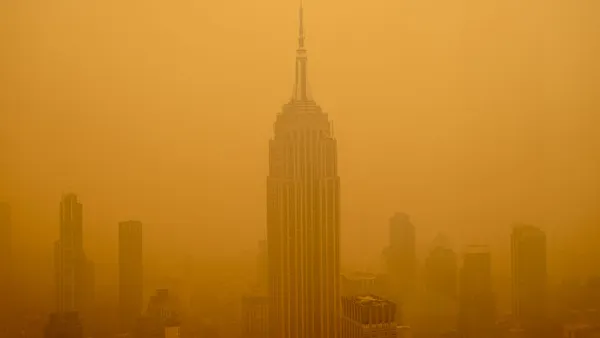The following is a contributed article by Jason Hartke, President at Alliance to Save Energy.
The new stats are in: the world's energy use increased sharply in 2018, and greenhouse gas emissions from the energy sector were up nearly 2%, reaching yet another all-time high. Those are the recent findings from the International Energy Agency, which attributed the rise in large part to economic growth.
The rise in carbon pollution would have been bigger, though, if it weren't for a few factors simultaneously pulling it down. Increased use of wind and solar power, for instance, helped tame the growth.
But the "largest brake" on growing emissions, the report said, was improvement in energy efficiency — using energy more productively and wasting less of it.
It may be little comfort to note this bit of good news amid the gloomy bigger picture, but it points to the top solutions we should be accelerating. In fact, the International Energy Agency has said energy efficiency improvements — just deploying existing cost-effective technologies — could be 40% of the solution for meeting international climate targets.
While we're improving energy efficiency across much of the world now, we're not doing it nearly aggressively enough to meet those targets.
The progress we've made so far on efficiency has been in no small part thanks to government policies. Mostly operating behind the scenes, these initiatives and investments have an incredible track record of success.
Consider what's happened with refrigerators, which are much larger today, have more bells and whistles, yet use a fraction of the energy of models from just decades ago, while costing less. Innovation has played a big part, but federal efficiency standards helped spur the private sector’s research for improved technologies and drove adoption of more efficient refrigerators.
Federal investments in research and development have paved the way for innovations ranging from better insulation to more fuel-efficient trucks. It's easy to take what we have today for granted, but behind much of it was a combination of sustained public and private sector efforts.
We know these federal policies and investments have been working to improve our energy efficiency. But the International Energy Agency's report is a reminder that our policymakers still have a long way to go, and yet in some cases our policies are moving us backward.
Our tax code, for example, used to contain provisions that incentivized homeowners, builders and building managers to make energy-efficiency improvements. But Congress — more than a year ago — let these provisions lapse. The law today incentivizes energy production, in various forms, yet doesn’t encourage measures to reduce demand for that energy in the first place.
We know the incentives would work; an Energy Department analysis found, for instance, that extending the incentive for five types of home efficiency improvements by a decade would lead to more than $13 billion in energy bill savings.
We're not making progress right now on appliance efficiency standards, either, even though there's consensus that they work. The Trump administration has failed to meet legal deadlines for updating efficiency standards for 16 appliances and equipment types, including air conditioners and washing machines.
The administration is proposing to roll back standards for light bulbs that were set to go into effect next year. If the plan goes through, we'll be needlessly using inefficient light bulbs for years to come, a decision that would see us waste the equivalent amount of electricity used by all households in New Jersey and Pennsylvania put together.
To be clear, the numbers show that in the United States, and across much of the world, we've made big progress on energy efficiency over the past decades, proving that we can do more with less.
But with global emissions still going up, we face a crossroads, and we need to be far more aggressive in our efforts. That's particularly true with energy efficiency, which the evidence demonstrates is the best, most cost-effective solution we have. We're not going to be able to use energy efficiency improvements to achieve 40% of our needed emissions reductions unless our policymakers put the pedal to the metal.
Let's get to work.












